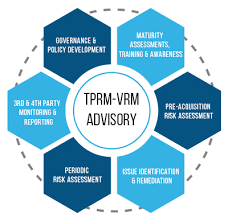Exploring the Drivers of Third Party Risk Management Market Gro
-
The powerful and sustained Third Party Risk Management Market Growth is being fueled by a potent and undeniable convergence of three primary forces: an increasingly stringent and expansionist regulatory landscape, the escalating complexity and fragility of global supply chains, and the profound operational dependencies created by widespread digital transformation. These are not cyclical trends but deep, structural shifts in the global business environment that are transforming TPRM from a niche compliance activity into a core strategic business function. The most significant and non-negotiable driver of this growth is the relentless and ever-expanding web of regulations and industry standards. Regulators across the globe, from the Office of the Comptroller of the Currency (OCC) in the U.S. financial sector to the enforcers of the General Data Protection Regulation (GDPR) in Europe, are placing an intense and explicit focus on how organizations manage the risks introduced by their third parties. These regulations are making it clear that a company is ultimately responsible for the actions of its vendors, particularly concerning data privacy and security. The threat of massive fines, reputational damage, and even personal liability for executives has created a powerful, compliance-driven imperative for organizations to implement formal, auditable TPRM programs, serving as the foundational engine for market expansion.
This regulatory pressure is powerfully amplified by the second major growth driver: the increasing complexity, interconnectedness, and demonstrated fragility of modern global supply chains. The traditional, linear supply chain has been replaced by a sprawling, multi-tiered ecosystem of suppliers, contractors, and sub-contractors, making it incredibly difficult for organizations to have visibility into their full range of dependencies. A series of recent high-profile events, from the COVID-19 pandemic and geopolitical conflicts to major cyberattacks like the SolarWinds incident (a classic third-party compromise), have brutally exposed the vulnerabilities inherent in this model. A disruption at a single, obscure fourth- or fifth-party supplier can bring the entire production line of a major global corporation to a halt. This has triggered a massive shift in corporate mindset, moving from a narrow focus on direct, Tier-1 suppliers to a much broader concern for the resilience of the entire supply chain. This is driving a huge demand for TPRM solutions that can provide "supply chain illumination," helping companies to map their dependencies, identify single points of failure, and proactively monitor for a wider range of risks, including geopolitical, operational, and even environmental, social, and governance (ESG) risks.
The third, and equally critical, driver of market growth is the universal trend of digital transformation and the wholesale outsourcing of critical business functions. In their quest for agility, efficiency, and access to specialized expertise, organizations are increasingly reliant on third-party service providers for a vast array of core operations. This includes everything from cloud hosting (with providers like AWS and Azure), payroll and HR (with providers like ADP), customer relationship management (with providers like Salesforce), and even cybersecurity itself (with Managed Security Service Providers). While this outsourcing provides significant benefits, it also means that an organization's most sensitive data and most critical business processes are now in the hands of third parties. A security breach or an operational failure at one of these critical SaaS or cloud providers can have a catastrophic impact on the organization. This deep operational entanglement creates a powerful, risk-driven need for continuous and rigorous oversight of these vendors. The imperative to ensure that these critical service providers are secure, compliant, and resilient is a fundamental driver of demand for advanced TPRM solutions that can provide deep visibility and continuous monitoring of this new, virtualized extended enterprise.
